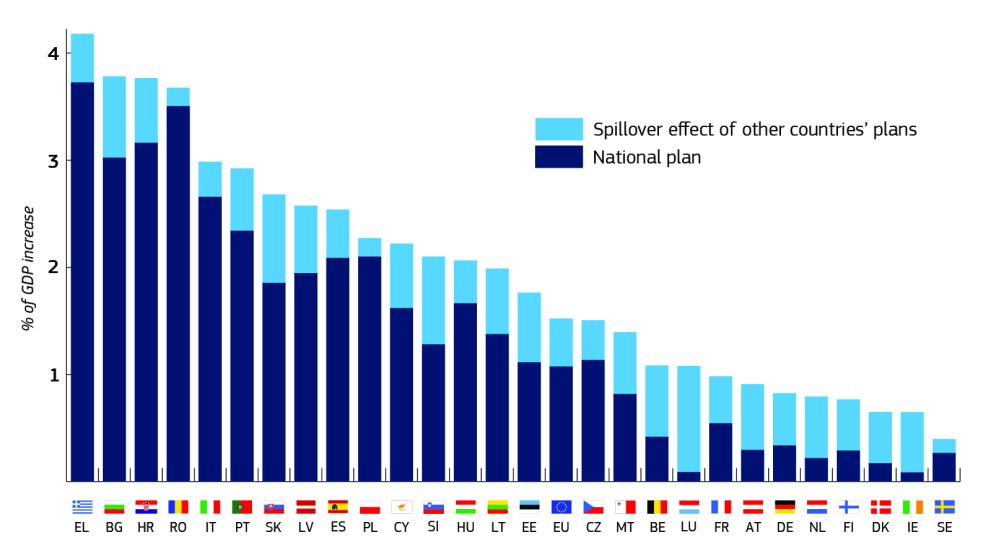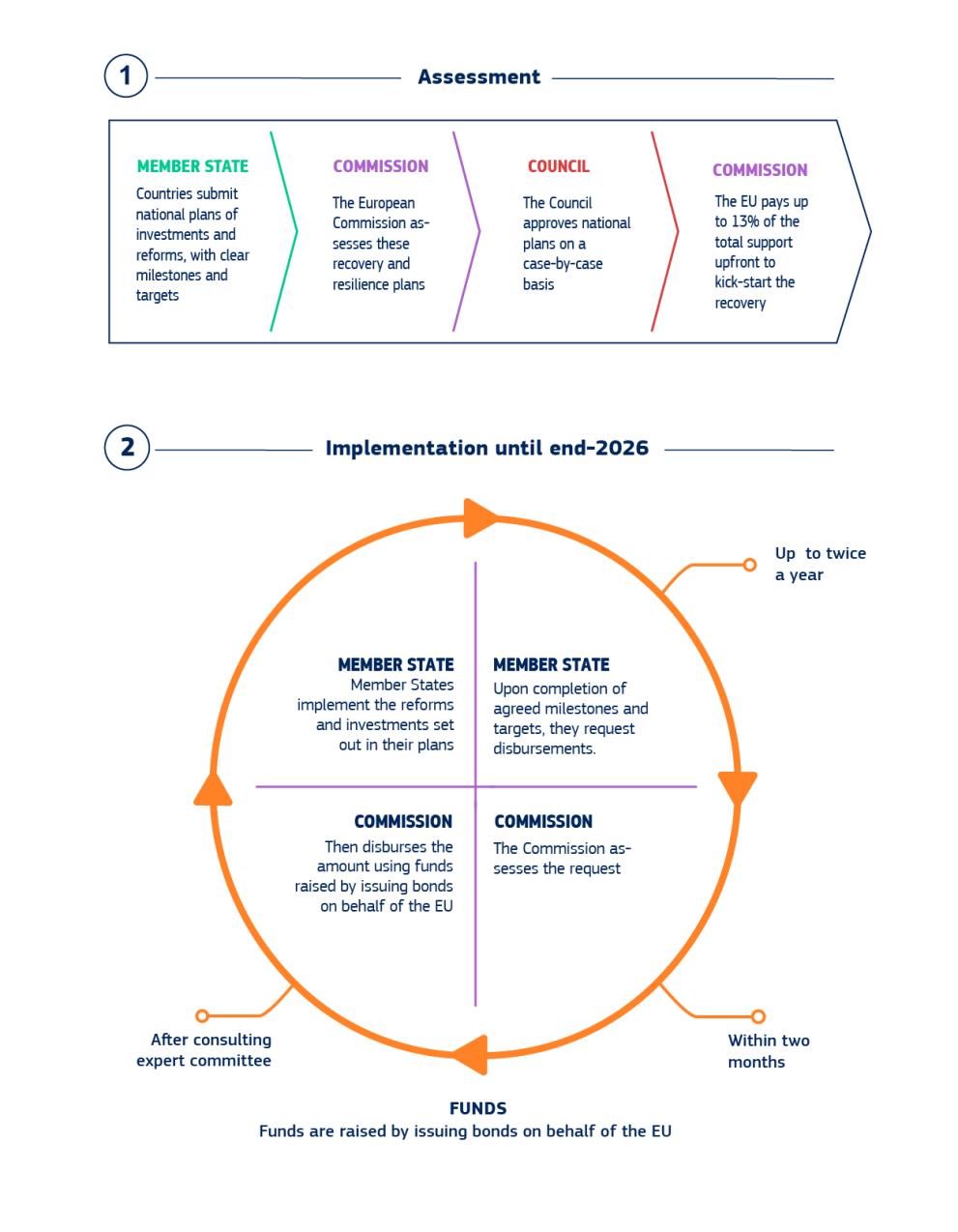[ad_1]
The Recovery and Resilience Facility
As part of a wide-ranging response, the aim of the Recovery and Resilience Facility is to mitigate the economic and social impact of the coronavirus pandemic and make European economies and societies more sustainable, resilient and better prepared for the challenges and opportunities of the green and digital transitions.
The Facility is a temporary recovery instrument. It allows the Commission to raise funds to help Member States implement reforms and investments that are in line with the EU’s priorities and that address the challenges identified in country-specific recommendations under the European Semester framework of economic and social policy coordination. It makes available €723.8 billion (in current prices) in loans (€385.8 billion) and grants (€338 billion) for that purpose
The RRF helps the EU achieve its target of climate neutrality by 2050 and sets Europe on a path of digital transition, creating jobs and spurring growth in the process.
Joint, coordinated action at the European level is more effective and benefits Member States more than individual national expenditures, not least due to significant spillover effects across countries.
The RRF is also at the heart of the implementation of the REPowerEU Plan, the Commission’s response to the socio-economic hardships and global energy market disruption caused by Russia’s invasion of Ukraine. In this respect, on 18 May 2022, the Commission proposed to make targeted amendments to the RRF Regulation to integrate dedicated REPowerEU chapters in Member States’ existing Recovery and Resilience Plans. This comes in addition to the large number of relevant reforms and investments which are already in the RRPs. It also published a revised Guidance document on Recovery and Resilience Plans in the context of REPowerEU.
.
The effects of NextGenerationEU on the EU’s real GDP (until 2024 in a high productivity scenario)

“Quantifying Spillovers of Next Generation EU Investment, Discussion Paper July 2021.”
The Facility is structured around six pillars: green transition; digital transformation; economic cohesion, productivity and competitiveness; social and territorial cohesion; health, economic, social and institutional resilience; policies for the next generation.
“Six pillars of the Recovery and Resilience Facility”

Scoreboard
The Recovery and Resilience Scoreboard displays EU countries’ progress in implementing their recovery and resilience plans and shows common indicators to report on progress and evaluate the Recovery and Resilience Facility and the national plans.
How does it work?
The RRF entered into force on 19 February 2021. It finances reforms and investments in Member States from the start of the pandemic in February 2020 until 31 December 2026. To finance NextGenerationEU, the European Commission, on behalf of the EU, will borrow on the capital markets.
To benefit from the support of the Facility, Member States submit their recovery and resilience plans to the European Commission. Each plan sets out the reforms and investments to be implemented by end-2026 and Member States can receive financing up to a previously agreed allocation..
Each plan should effectively address challenges identified in the European Semester, particularly the country-specific recommendations adopted by the Council. It should also advance the green and digital transitions and make Member States’ economies and societies more resilient.
The Recovery and Resilience Facility is performance based. Fulfilment of agreed milestones and targets towards achieving the reforms and investments in the plans will unlock regular payment.
“From plans to implementation. The Recovery and Resilience Facility (RRF) – How does it work?”

Questions and answers on the Recovery and Resilience Facility
Close links to the European Semester
The recovery and resilience plans will drive the Member States’ reform and investment agenda for the years to come. The European Semester, with its broader scope and multilateral surveillance, will usefully guide and complement the implementation of the recovery and resilience plans.
For this reason, starting from its 2022 cycle, the European Semester process was adapted to take into account the creation of the Recovery and Resilience Facility and of the implementation of the recovery and resilience plans:

The European Semester in the time of the Recovery and Resilience Facility
More information on the European Semesterr
The country reports, the in-depth reviews and the proposals for CSRs form part of the yearly European Semester Spring package.
The CSRs proposed by the Commission in the context of the 2022 European Semester Spring Package also identify for each Member State which action should be taken in light of the current energy challenges, in the context and in line with the Commission’s REPowerEU proposal.
National recovery and resilience plans
The flags below will guide you to the Member State section. The links contain all relevant country-specific information, such as the recovery and resilience plans and key points about them, and where available, the legal texts approving the plan and accompanying press material.
[ad_2]
Source link
